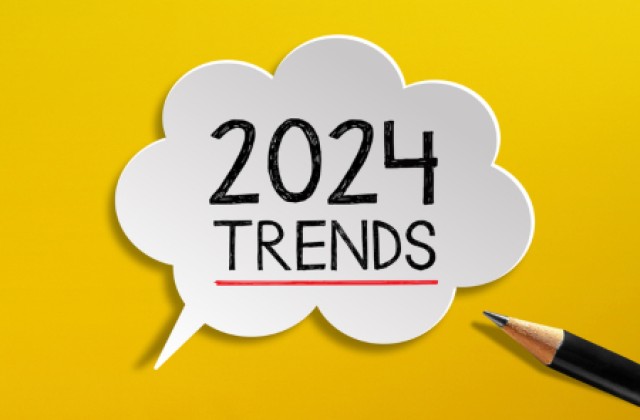
Asphalt is designed to be flexible when warm to prevent cracks, which works most places three seasons of the year, but in places with extreme winters it hardens, making it brittle and prone to cracks that disrupt the road surface. Supply chains are similarly built with flexibility and resiliency in mind, but extreme disruption can create gaping cracks. While some potholes can be patched, extensive damage may call for rebuilding the road. This reset provides the opportunity to consider paving a “high-road supply chain,” which can incorporate a broad range of concerns.
Rebuild to increase value
Dr. Susan Helper, an economics professor at the Weatherhead School of Management at Case Western Reserve University, makes the case for the high-road supply chain to reduce risk, not only from long supply chains but also from risks to society in poor labor practices or environmental standards. Helper published a recent journal article with some academic colleagues where they propose a new term, “total value contribution,” to incorporate not just costs but also drivers of value for customers. They suggest that in addition to the current potholes brought about by the pandemic, deeper underlying trends were already at work, such as consumer and employee interest in greater social responsibility, the challenges brought about by increasingly long and complex supply chains, and systemic incentives driving an overly-narrow valuation of cost minimization. These forces shift attention from costs alone to values for the company.
The pandemic accelerated some of these forces, as Candace Browning of BofA Securities writes in Barron’s in what she terms a “tectonic shift to stakeholder capitalism,” which means considering not only shareholders but also consumers, employees, and the state while also addressing sustainability. For example, mitigating even low-probability risks like pandemics is important for resilience, given their catastrophic societal impacts, so increasingly leaders are looking beyond mere financial measures to assess environmental, social, and governance factors (ESG). Stakeholder capitalism may even pay off for shareholders, because ESG investing has increased during the pandemic and companies highly-rated on ESG have outperformed their peers. The very efforts to make companies more sustainable in their operations require increasing efficiency and reducing waste in ways that result in greater agility and resiliency, as well as better returns. A more mature supply chain is both more efficient as well as more sustainable.
Rebuild to improve outcomes
Another aspect of the high-road supply chain is one built by diverse and inclusive teams. In this case as well, a more socially-responsible choice also pays off. Consulting firm McKinsey finds that companies in the top quartile for diversity on their executive team are more likely to outperform than those in the bottom quartile - 25% more likely for gender diversity and 36% more likely for racial/ethnic diversity. Diversity considerations can also extend into your supply network, where some evidence shows an impact of increased resilience as well. A recent study of 300 minority suppliers across seven US states found that these firms were more financially healthy and resilient than their non-minority peers.
As the trend drive to adopt AI and machine learning in supply chains grows, some raise concerns about ethical implications of these technologies. For some, the concern is about job losses, fearing that math will move them out of a job, but while job shifting will occur, humans are needed more than ever, because while supply chains may need AI, AI needs humans. AI can automate the mundane and surface the exceptions for the planner, and it certainly has been an exceptional year in supply chain! Others are concerned about are about ethical use of AI, given well-publicized cases of algorithmic bias, but companies like Cisco are using AI to address ethical issues in the supply chain, helping them monitor suppliers more effectively.
Know when to take the high road
In warmer, better seasons, just like the asphalt on our roads, humans and supply chains can be remarkably flexible and resilient. But extreme conditions, like pandemics, highlight the vulnerability of both people and supply chains. The hard surface of the road cracks easily in winter, just like rigid, linear supply chains break down and fail to deliver the resilience needed to withstand disruption. As we face supply chains littered with cracks, is now the time to move beyond cost to value and consider stakeholder capitalism? While this may seem like a virtuous but untenable position in stressed economic conditions, as I’ve shown in examples above, the high road can also perform well financially.
To give you more food for thought, we will be addressing several of these topics in our upcoming Kinexions ’20 conference. This year's conference is virtual and free to attend. So, grab the best seat in your house October 20 – 21 to dig more deeply into these topics (and so much more). All times listed EDT.
-
Keynote: The Intersection of Human and Machine Intelligence in Supply Chain (Oct. 21, 10 – 10:45 a.m.)
-
AI and Ethics (Oct. 20, 12:45 – 1:45 p.m.)
-
The Value of Diversity and Inclusion in Your Workplace (Oct. 21, 12:15 – 1:15 p.m.)
-
Putting the Spotlight on Sustainability with Recycling Planning (Oct. 21, 12:45 – 1:15 p.m.)
-
Supply Chain Sustainability: Now More Important Than Ever (Oct. 21, 1:15 – 1:45 p.m.)





